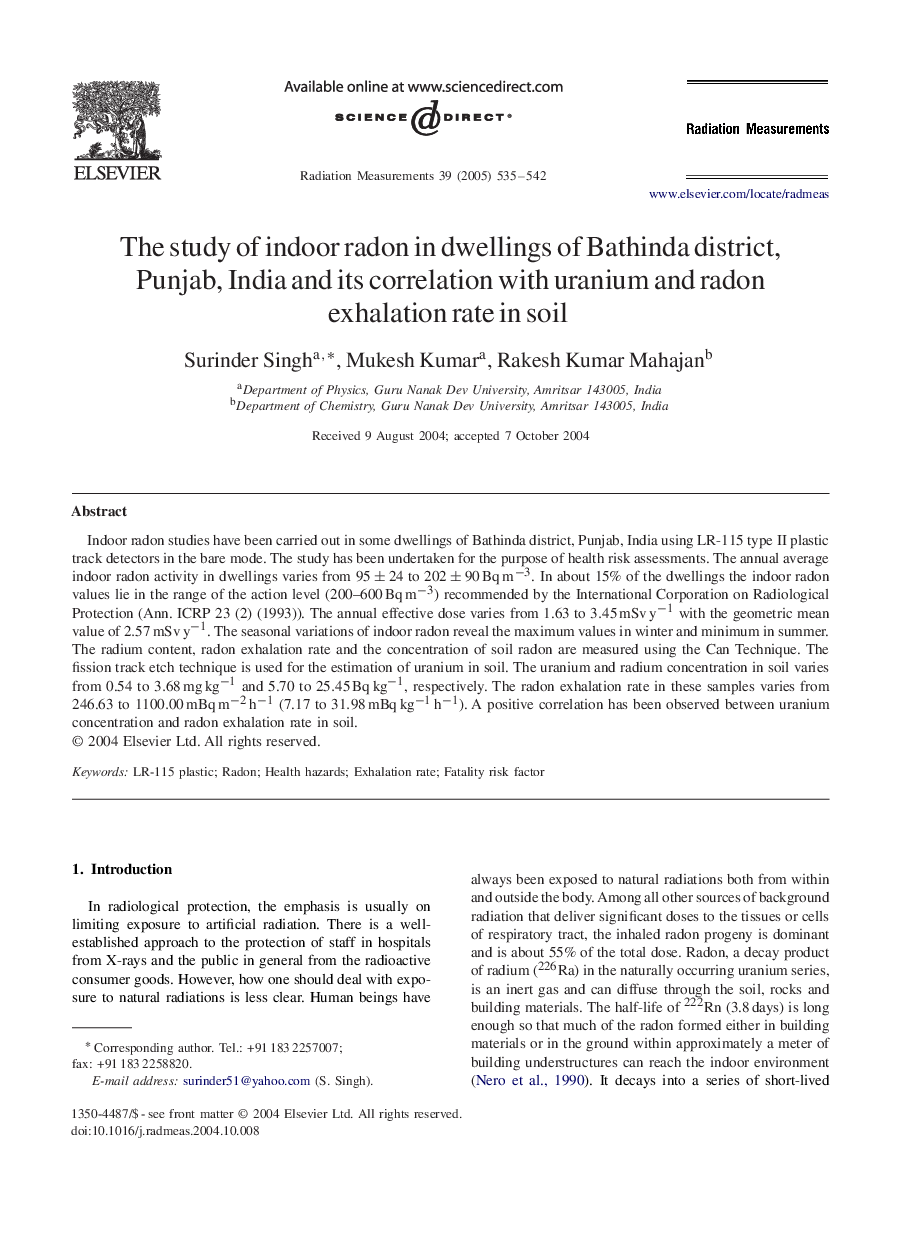| کد مقاله | کد نشریه | سال انتشار | مقاله انگلیسی | نسخه تمام متن |
|---|---|---|---|---|
| 10731197 | 1043117 | 2005 | 8 صفحه PDF | دانلود رایگان |
عنوان انگلیسی مقاله ISI
The study of indoor radon in dwellings of Bathinda district, Punjab, India and its correlation with uranium and radon exhalation rate in soil
دانلود مقاله + سفارش ترجمه
دانلود مقاله ISI انگلیسی
رایگان برای ایرانیان
موضوعات مرتبط
مهندسی و علوم پایه
فیزیک و نجوم
تشعشع
پیش نمایش صفحه اول مقاله

چکیده انگلیسی
Indoor radon studies have been carried out in some dwellings of Bathinda district, Punjab, India using LR-115 type II plastic track detectors in the bare mode. The study has been undertaken for the purpose of health risk assessments. The annual average indoor radon activity in dwellings varies from 95±24 to 202±90Bqm-3. In about 15% of the dwellings the indoor radon values lie in the range of the action level (200-600Bqm-3) recommended by the International Corporation on Radiological Protection (Ann. ICRP 23 (2) (1993)). The annual effective dose varies from 1.63 to 3.45mSvy-1 with the geometric mean value of 2.57mSvy-1. The seasonal variations of indoor radon reveal the maximum values in winter and minimum in summer. The radium content, radon exhalation rate and the concentration of soil radon are measured using the Can Technique. The fission track etch technique is used for the estimation of uranium in soil. The uranium and radium concentration in soil varies from 0.54 to 3.68mgkg-1 and 5.70 to 25.45Bqkg-1, respectively. The radon exhalation rate in these samples varies from 246.63 to 1100.00mBqm-2h-1 (7.17 to 31.98mBqkg-1h-1). A positive correlation has been observed between uranium concentration and radon exhalation rate in soil.
ناشر
Database: Elsevier - ScienceDirect (ساینس دایرکت)
Journal: Radiation Measurements - Volume 39, Issue 5, October 2005, Pages 535-542
Journal: Radiation Measurements - Volume 39, Issue 5, October 2005, Pages 535-542
نویسندگان
Surinder Singh, Mukesh Kumar, Rakesh Kumar Mahajan,